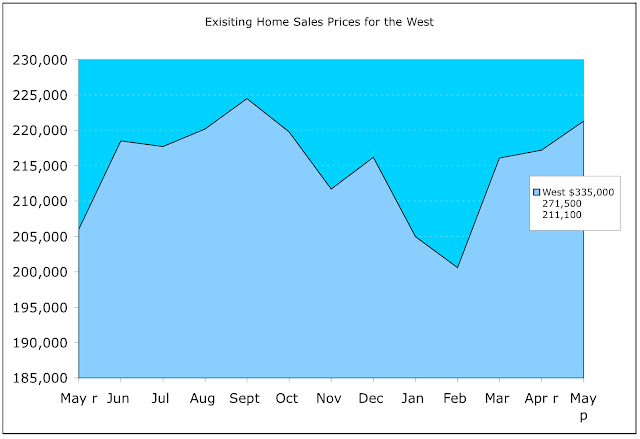The U.S. Congress is notorious for not caring about budget deficits - even when the rest of the world is collapsing around them and
central bankers are screaming at them. This can be verified by the fact that 1835 was the last time our public debt was zero in this country. There are four different government agencies- Government Accountability Office (GAO), Congressional Budget Office (
CBO), Office of Management and Budget (OMB), and U.S. Treasury Department- that warn Congress of long-term structural problems annually. The problem is that the government's entitlement programs (Social Security, Medicare, Medicaid etc.) will exceed tax revenues in just a few short years. The main issue though is not the actual size of the government debt (because technically the U.S. government could borrow indefinitely) instead it's the instability and the loss of confidence that occurs at a given level of debt (
the WSJ's Number of the Week column highlighted this). How can we get the U.S. Federal Government on the road to fiscal sustainability? At the same time how could we possibly improve the government's credibility and transparency so that a crises of confidence never ensues?
I borrow lessons from monetary policy to help illustrate a possible solution:
In monetary theory, there is something called the time-inconsistency problem (
for a nice explanation from Greg Mankiw). The idea is that monetary policy conducted on a discretionary, day-by-day basis leads to poor long-run outcomes. Monetary policymakers are tempted to pursue a policy that is more expansionary than firms or people expect because such a policy would boost economic output (or lower unemployment) in the short-run. This model can be applied to Congress which frequently exploits the long-run trade off with the "expansionary policy today worry about long-run fiscal structural deficits later" model. Although these entitlement programs help a lot of struggling people today (and help certain politicians get re-elected), the debt that is being accumulated will threaten the financial stability and dominance of the United States in the future.
The solution that is offered to the time-inconsistency problem is something called a nominal anchor. A nominal anchor can be anything that signals to the public that policy is being followed according to plan or is being deviated from. Putting in place a strong nominal anchor on the United States budget deficit can help prevent the time-inconsistency problem by providing a constraint on expansionary discretionary policy. A strong nominal anchor can help ensure that the U.S. Congress will focus on the long-run and resist the temptation (or political pressures) to pursue short-run expansionary policies inconsistent with the long-run fiscal sustainability goal.
We can apply the idea of a rule based nominal anchor from monetary policy to the United States debt.
A "
Taylor Rule" for the deficit could be used to determine safe thresholds and would be able to enforce itself. Although the Federal Reserve does not follow an explicit rule, it has a long history of maintaining price stability for which is has been deemed credible by the markets. Also
economists will frequently use a Taylor like rule to monitor and judge the Fed's performance which provides a check on the Fed. A rule based deficit target that is mandated by law would increase the level of transparency and accountability needed to reduce the long-term structural debt. This rule would create a visible and transparent budget constraint for the Congress. Although theoretically the budget constraint is the amount of tax revenue a government receives and the amount of interest it has to pay on government debt. The ultimate budget constraint is the threshold at which the U.S. could suffer a crises of confidence and default on its debt. Like most households which have a limit as to how much they can spend, a rule based deficit number would provide an effective limit as to how much Congress spends. It would also help Congress politically insulate itself when it comes to justify unpopular decisions such as reducing or eliminating several of the entitlement programs.
A basic principle of democracy is that the public should have the right to control the government's actions. In a democracy, the public must have the capability to punish incompetent policymakers to control their actions. If policymakers cannot be punished in someway then our basic principle of democracy is violated. Accountability is also important because it promotes government efficiency. Being subject to sanctions makes it more likely that incompetent policymakers will be replaced by competent ones. This also creates better incentives for policymakers to do their job well.
Whenever Congress deviates from the rule, the public media and the Fed (or other politically insulated government bodies) could cut Congresses spending binges off. Deviations from the rule would automatically subject members of Congress to a public hearing held by the Federal Reserve, Treasury Department and the GAO. It would literally force Congress to explain each dollar spent over what the rule suggests as sustainable and thus result in greatly improved transparency. This would also allow the Congress to gain back some credibility and therefore lead to reduced uncertainty about the long-term structural deficit. A crisis of confidence can only occur if there is uncertainty and I would argue there is much uncertainty around the government's long-term stance on fiscal sustainability. This would be a nice preventive measure against a sovereign default because it would constantly reinforce confidence in the ability and more importantly willingness to repay.





